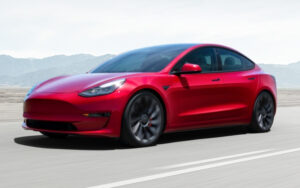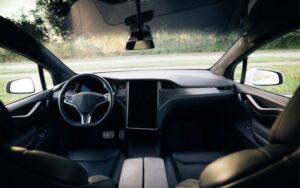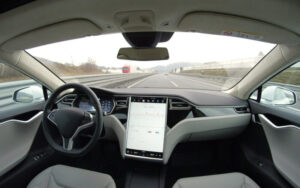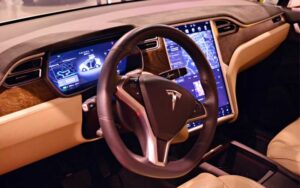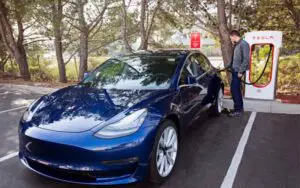9 Most Common Problems With Tesla!
Tesla has revolutionized the automotive industry with its sleek designs, cutting-edge technology, and eco-friendly approach.
However, with any new technology, there are bound to be some issues that arise. Unfortunately, Tesla has had a handful of this, despite its expensive nature.
One of the most common problems with Tesla vehicles is the battery and its charging. Some owners have reported that their battery’s range has decreased over time or that the battery has failed altogether. Other problems common with Teslas include autopilot malfunctions, panel gaps, software issues, suspension problems, etc.
In this post, I’ll highlight nine common problems with Tesla reported by customers and enthusiasts alike.
From the root of the issue to potential solutions, we’ll explore all aspects of this problem and provide a comprehensive analysis.
9 Most Common Problems of Tesla Vehicles
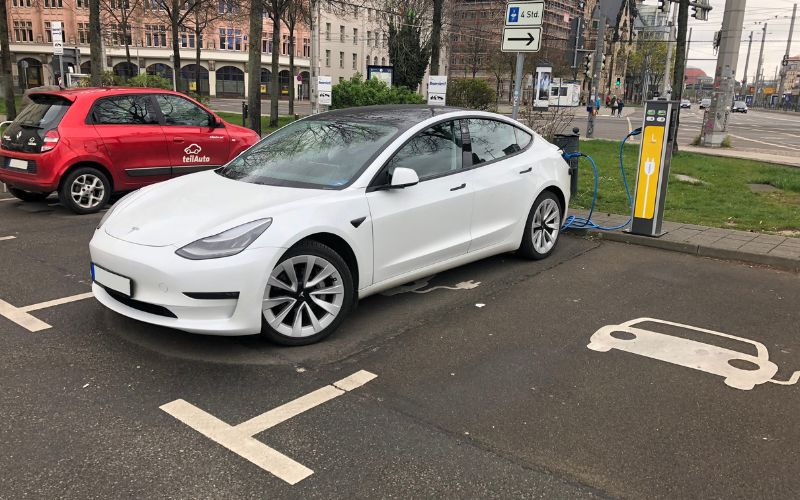
While Tesla vehicles are generally well-made, a few issues seem to crop up more often than others.
Below is a review of the most common problems you can expect from your Tesla.
#1. Software Issues
Tesla vehicles rely heavily on software to control everything from the navigation system to the door locks.
While Tesla’s software is generally very reliable, some owners have reported issues with their vehicles freezing or crashing.
One way to resolve these problems is a software update, but it can be frustrating for owners who rely on their cars for daily use.
#2. Autopilot Malfunctioning
Tesla’s Autopilot system design is such that it provides a semi-autonomous driving experience, but it is not infallible.
Some owners have reported issues with their Autopilot systems malfunctioning, leading to dangerous driving situations.
Tesla has released several software updates to address these issues, but some owners remain wary of relying too heavily on the system.
#3. Power Steering Issues
Some Tesla owners have reported problems with their power steering systems, leading to difficulty steering the vehicle.
Such problems can cause accidents, especially when driving at high speeds or on winding roads.
Hence, this is a serious issue needing immediate resolution as it poses a safety concern.
#4. Door Handle Problems
Tesla vehicles have unique retractable door handles. This design improves aerodynamics and reduces drag.
However, some owners have reported issues with the door handles not functioning properly, making it difficult to get into or out of the vehicle.
This problem can be especially frustrating when the handles malfunction in inclement weather.
#5. Battery and Charging Problems
Tesla owners rely on a network of Supercharger stations to keep their vehicles charged while on long trips.
However, some owners have reported issues with Supercharger stations not working properly or their cars not charging at the expected rate.
This can be a major inconvenience for owners who need to travel long distances. In addition, most Tesla batteries are unreliable and do not live out their estimated lifespans.
The battery is the heart of an electric vehicle, and replacing it can be a costly and time-consuming process. Thus, this is a major problem for Tesla owners.
#6. Panel Gaps
While not necessarily a functional issue, some Tesla owners have reported cosmetic problems with their vehicles, specifically panel gaps between the doors and the car’s body.
While this may not affect the car’s performance, it can be frustrating for owners who expect high quality from their expensive vehicles.
#7. HVAC Problems
Some Tesla owners have reported issues with their heating, ventilation, and air conditioning (HVAC) systems not working properly.
This problem is especially frustrating during extreme weather conditions, as it can affect the comfort of passengers in the vehicle.
#8. Suspension Problems
Some Tesla owners have reported issues with their vehicle’s suspension, specifically with the air suspension system.
This can lead to a bumpy or uncomfortable ride and potential safety concerns if the suspension fails while driving.
#9. Paint Issues
Tesla owners have reported problems with the paint on their vehicles, specifically with the paint peeling or chipping easily.
While this may not affect the car’s performance, it can be frustrating for owners who want their vehicles to look their best.
Why are Tesla Vehicles so Unreliable?
Despite Tesla’s reputation for cutting-edge technology, the company’s vehicles suffer reliability issues.
One reason for this is that Tesla is still a relatively young company and has not yet had the time to develop the same level of experience and expertise as established car manufacturers.
Tesla’s vehicles are also highly complex, with many advanced features and technologies.
While this complexity can make the cars more appealing to some buyers, it also makes them more prone to problems.
Another factor that may contribute to Tesla’s reliability issues is the company’s focus on innovation and rapid development.
Tesla is famous for its fast-paced approach to product development, and the company is constantly introducing new features and technologies.
While this approach can be exciting for customers, it can lead to quality control issues and other problems.
Below is a table showing the reliability of some popular Tesla models
| Tesla Model | Reliable | Unreliable |
|---|---|---|
| Model X | ✔ | |
| Model Y | ✔ | |
| Model S | ✔ | |
| Model 3 | ✔ |
Which Tesla Model Has the Most Problems?
Tesla has been at the forefront of electric car technology, offering some of the most innovative and advanced vehicles on the market.
However, like any other car brand, Tesla’s vehicles also have their fair share of problems.
Below are some of the problems associated with the popular Tesla Models.
#1. Tesla Model S
The Model S is Tesla’s flagship sedan, first introduced in 2012. The vehicle has received critical acclaim for its performance and driving experience.
However, the Model S has had its fair share of issues over the years. Some of the most common issues Model S owners report include problems with the car’s suspension, battery, and drivetrain.
Other issues include door handles that don’t work, power steering failures, and charging problems.
#2. Tesla Model X
The Model X is Tesla’s luxury SUV, first introduced in 2015. The vehicle features Falcon Wing doors and has a unique design that sets it apart from other SUVs on the market.
However, the Model X has also had its fair share of issues. Some of the most common issues reported by Model X owners include problems with the car’s Falcon Wing doors, the air suspension system, and problems with the car’s touchscreen.
#3. Tesla Model 3
The Model 3 is Tesla’s entry-level sedan, first introduced in 2017. The vehicle’s design is such that it is more affordable than the Model S while still offering many of the same features.
The Model 3 has been praised for its performance and driving experience but has also had some reported issues.
Some of the most common issues reported by Model 3 owners include problems with the car’s paint job, issues with the car’s door handles, and problems with the car’s touchscreen.
#4. Tesla Model Y
The Model Y is Tesla’s latest SUV, introduced in 2020. The vehicle’s design is such that it is a more affordable version of the Model X while still offering many of the same features.
The Model Y has received positive reviews for its performance and driving experience but has also had some reported issues.
Some of the most common issues reported by Model Y owners include problems with the car’s build quality, issues with the car’s door handles, and problems with the car’s touchscreen.
It’s important to note that while these models have reported issues, they are still considered some of the most innovative and advanced vehicles on the market.
Tesla has been known to address issues with their vehicles quickly and efficiently, and they offer a warranty that covers many of the common issues that owners may experience.
Note: While each Tesla model has its own reported issues, it’s difficult to say which model has the most problems.
As with any car brand, it’s important to research and understand the potential issues you may encounter before making a purchase.
Tesla Model X Model Year to Avoid
If you’re considering buying a Tesla Model X, you must be aware of the potential issues you may encounter.
Here are some Model X model years that you may want to avoid:
2016:
The 2016 Model X was the first year of production for this model, and it had several issues.
Some owners reported problems with the car’s falcon-wing doors and issues with the car’s suspension and electronics.
2017:
While the 2017 Model X had fewer issues than the 2016 model, it still had some problems.
There have been reported issues with the car’s falcon-wing doors and problems with the car’s touchscreen display.
2018:
The 2018 Model X had fewer issues than previous models, but some owners still reported problems with the car’s falcon-wing doors and suspension.
Not all Model Xs from these years will have issues, and many owners have had positive experiences with their vehicles.
However, if you’re concerned about reliability, it may be worth considering a newer model or opting for a different Tesla model altogether.
Without a doubt, Tesla has revolutionized the automotive industry with its innovative electric vehicles and cutting-edge technology, but it is not without its challenges.
From concerns over the safety of its Autopilot system to the high cost of repairs and maintenance, there are several problems that Tesla still needs to address.
Additionally, the company’s tendency to prioritize production and delivery timelines over quality control has resulted in numerous customer complaints and quality issues.
However, despite these challenges, Tesla remains a force in the automotive industry, and with continued innovation and improvements, it has the potential to overcome these problems and continue to lead the way in electric vehicle technology.

Hey, I’m Michael Davis, a 35-year-old with a degree and a love for cars and tech. Since I was a kid, cars have been my thing—so much that I even thought they ran on magic beans! Fast forward, and I’ve built Vehicle Army, your one-stop-shop for easy-to-understand car facts.

